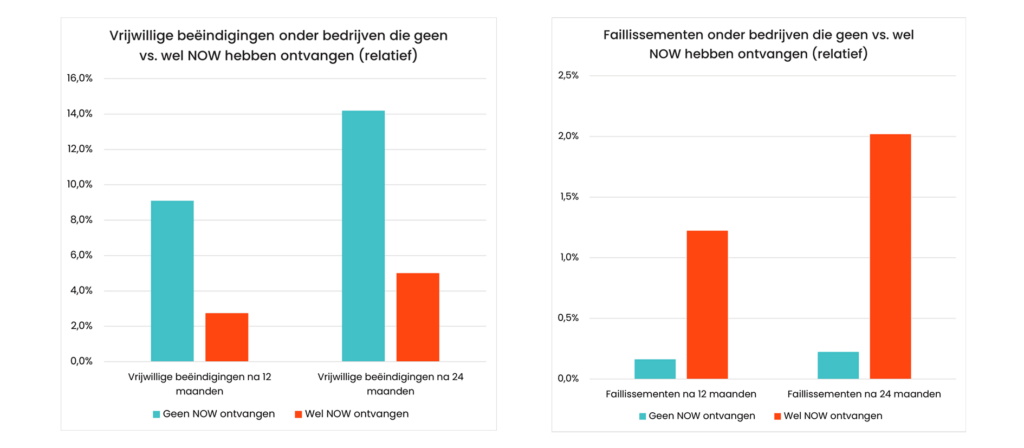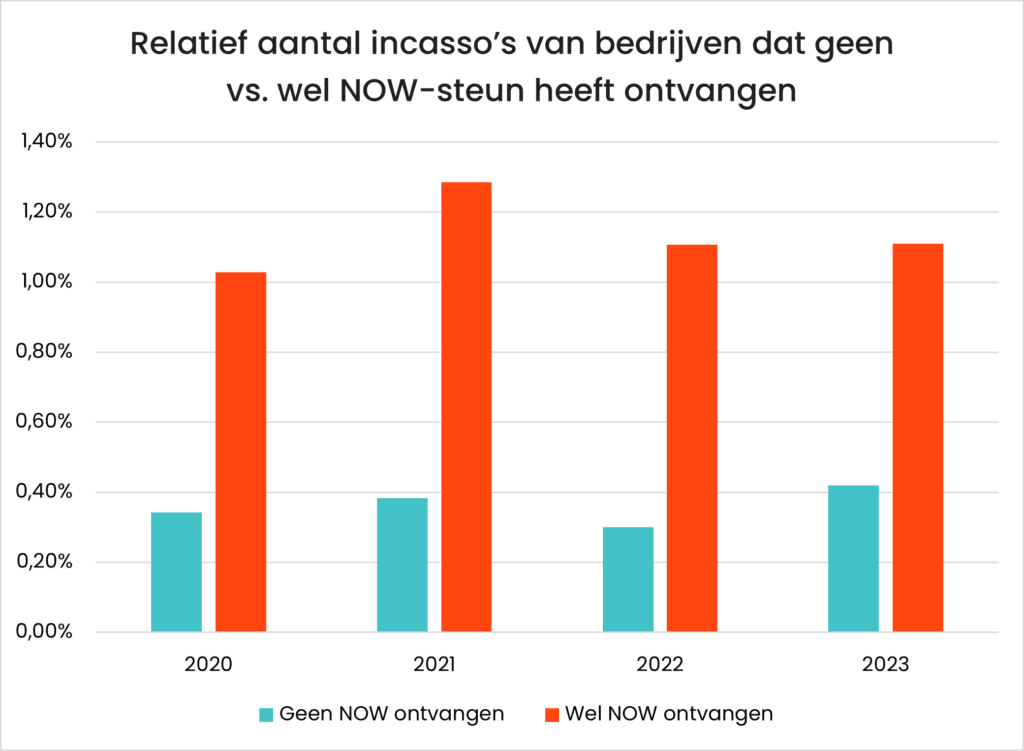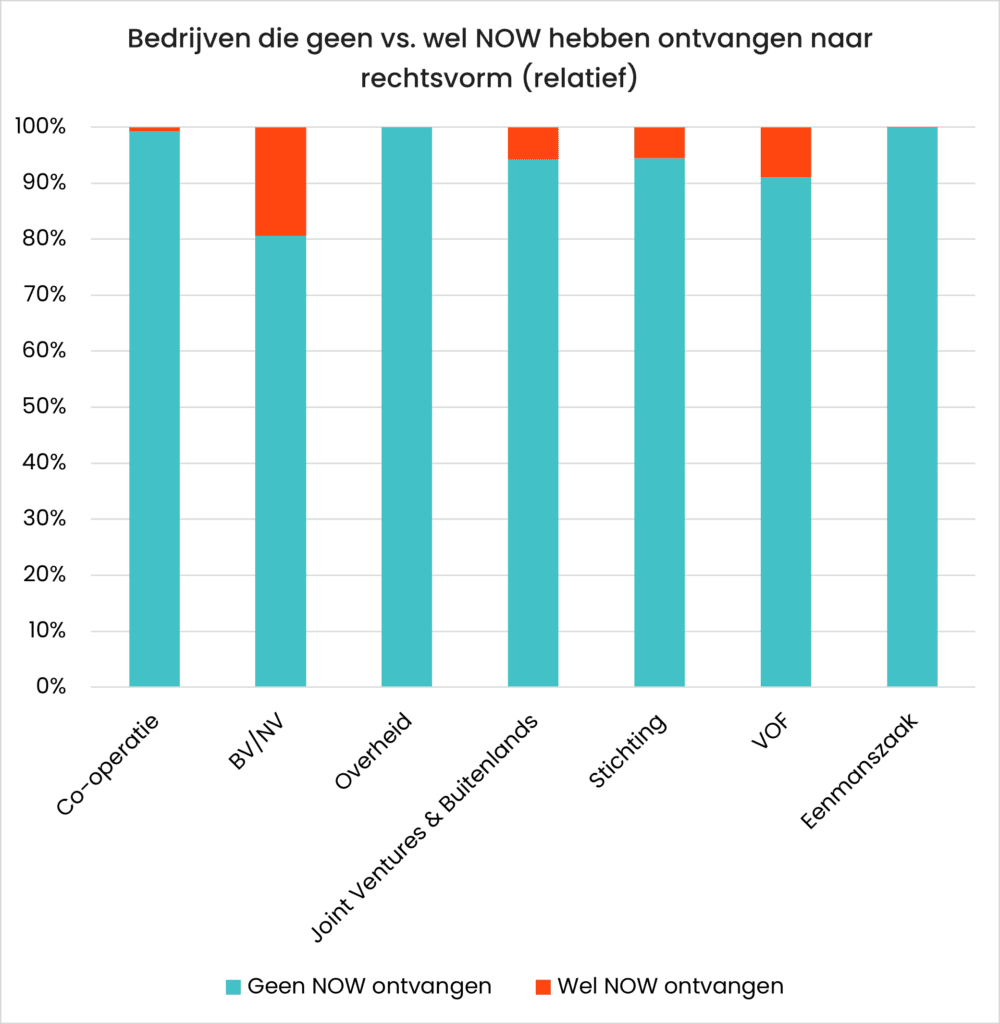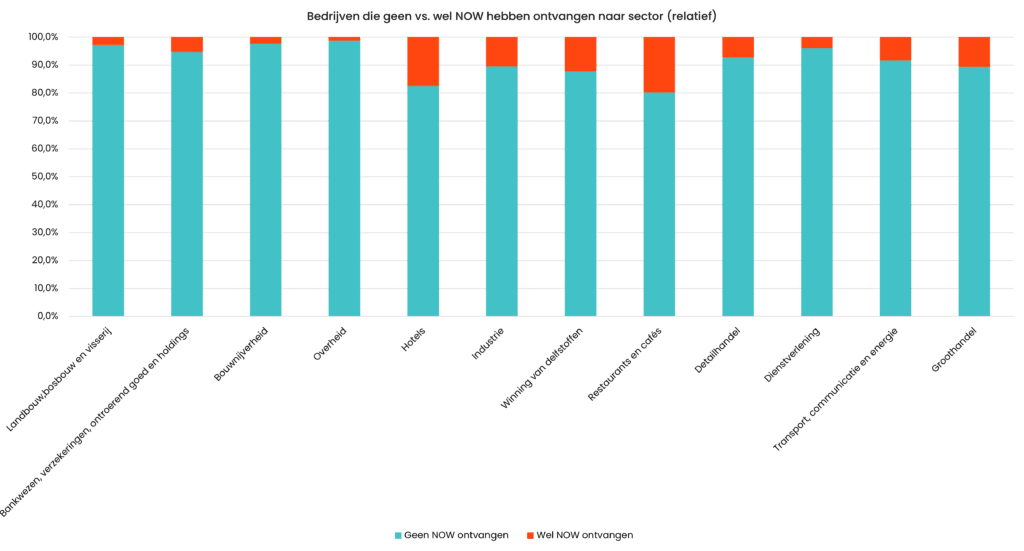Rotterdam, November 3, 2023 - Companies that received NOW-support are riskier to do business with, both before and after the pandemic. This is revealed by a study conducted by Altares Dun & Bradstreet on the impact of NOW support among 84,000 companies. Additionally, companies that received support also paid their bills relatively less often on time, were more frequently involved in collection processes, and faced a higher risk of bankruptcy compared to companies that did not receive support.
"The research shows that NOW support was not only given to companies on the brink of bankruptcy. Many of the NOW-recipients had even a low risk of bankruptcy," says Barry de Goeij, Senior Data Scientist at Altares Dun & Bradstreet. "However, we do see a difference between the companies that applied for support and those that did not: they more frequently had a history of late payments, more collection procedures, and financially challenging circumstances. Doing business with these companies carries a higher risk. Relatively, the risk of collection is three times higher for companies that applied for NOW-support compared to those that did not."
Companies that received support had a relatively higher risk of bankruptcy
Altares Dun & Bradstreet assigns companies a bankruptcy risk rating on a scale from 1 to 4, with 1 indicating a low likelihood of bankruptcy and 4 denoting an elevated risk. The research found that companies that did not receive NOW-support generally exhibited a lower bankruptcy risk. Interestingly, within the group of companies that had applied for NOW-support, there were relatively more companies with a rating of 4, although not all companies in this group had that rating.
From the initial measurement in June 2020, the number of bankruptcies among companies that did not receive support was tracked. After 12 months, it was 0.16 percent, and after 24 months, it was 0.22 percent. In contrast, among companies that did receive support, after 12 months, 1.22 percent had gone bankrupt, and after 24 months, it was as high as 2.02 percent.
A similar analysis was conducted regarding voluntary cessation of activities. Among companies without support, 9.10 percent chose to terminate their operations after 12 months, and this figure increased to 14.20 percent after 24 months. In contrast, among companies with NOW-support, this percentage was considerably lower, at 2.75 percent after 12 months and 5.01 percent after 24 months.

Doing business with companies that received support carried a threefold higher risk
The Dun & Bradstreet Paydex indicates how long it takes for an organization to meet its payment obligations based on payment experiences from those organizations. It was found that companies that did not receive NOW-support, both in 2020 and 2023, more often paid their invoices on time compared to companies that did receive support. Additionally, Altares Dun & Bradstreet observed that in the majority of organizations, regardless of whether they received support, there were no ongoing collection processes. Doing business with companies that applied for NOW-support carried a three times greater relative risk compared to companies that did not use the support because they were more frequently involved in collection processes.

The number of support applications steadily decreased
NOW-support was primarily requested during the initial period, before June 2020, known as NOW-1. In this period, 72,377 companies first received support. In the subsequent periods, the number of applications declined significantly, with only 1,278 companies receiving NOW-support for the first time in the last period, NOW-6. NOW-support was most requested in the following sectors:
- Restaurants and cafes (19.81%)
- Hotels (17.52%)
- Wholesale (10.60%)


